After a 24-year hiatus, Scott Ramsey was back in the left seat following an AOPA Rusty Pilot Seminar in Houston. He wanted to buy one of the newer Grumman Tigers built in the 2000s, similar to the 1979 Cheetah he owned decades before. “A limited selection of planes led me to look around and see what’s the most similar to the Grumman in the sense of great visibility and fun to fly,” Scott said. He also wanted something that was efficient and fast. “Ultimately that led me to the Diamond.”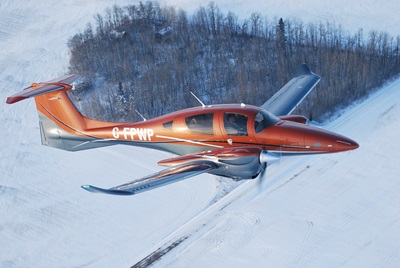
After a friend took him up in a Diamond, he realized it was even better than a Tiger because “it’s modern, composite, has an unparalleled safety record, and it’s very efficient. That’s what led me to buy a DA40,” Scott said. “The very first thing I did when I bought that airplane, I looked for a type club and I couldn’t find one.”
That’s because there wasn’t a type club for Diamond aircraft, until this year. Scott did find the Diamond Aviators Network (DAN), which is an online forum where owners ask questions and share information. “But it lacks all the things you’d really expect from a type club—events, social interactions, safety, and training. The kinds of things you can’t get from a blog.”
What he didn’t know was Russ Irwin, a frequent contributor on DAN, put out a call to see if people were interested in forming a type club for Diamond owners. In September of 2022, Scott attended Diamond Fest, the Diamond Aircraft open house at the North American factory in London, Ontario. That is where he met Ed McDonald, president of the Diamond Pilots Association (DPA)—the type club for Diamond owners. The DPA was still in formation at that time and Scott was recruited to serve as the events coordinator because of his experience with several flying clubs.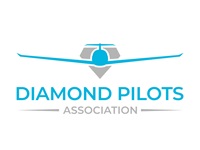
Humble Beginnings
Diamond Aircraft was founded in the early 1980s by Austrian aircraft designer Wolf Hoffman. At the time the company was called Hoffmann Flugzeugbau and made a two-seat motor glider the H36 Dimona. Over time the company changed ownership and added aircraft designs to its fleet, taking the name Diamond Aircraft Industries in 1998. Today, Diamond produces five models. There are three single-engine aircraft—the two-seat DA20, which was developed from the motor glider, the four-seat DA40, and the five-seat, retractable gear DA50 RG, which received it’s FAA certification in July. Diamond also makes two twin-engine models – the four-seat DA42 and the five to seven-seat DA62.
In 2007, Diamond created a sister company, Austro Engines, which builds jet fuel burning piston engines for the DA62, DA42-VI, and DA40 NG models. These engines have no mixture control, no magneto ignition, and no prop control lever. There is simply a single lever for the engine. There is no engine runup needed and no power calculations based on rpm and manifold pressure.
Ed, who was in the Royal Canadian Air Force and then had a career as an airline pilot retiring on the 787, has owned a DA62 for two years. He has a business that designs instrument approaches for airports using satellite-based navigation. The company needs a plane to do flight checks all across Canada and when it was time to replace his early 1980s Seneca III, his friend showed him the DA62.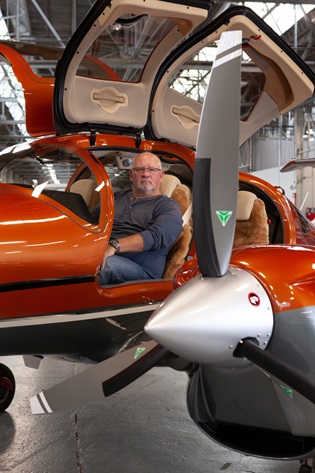
“I opened the hangar door, I took one look at that airplane and went, ‘Wow!’ I mean the lines on that airplane are nice and sleek and sexy,” Ed said. “Then I started digging around the specs—the avionics, the fact that it is a jet-fuel burning diesel engine, fully electronic engine controls—no mixture, pitch, prop. It’s just a single lever for each engine and then the Garmin 1000 package. I didn’t look at anything else.”
Ed and Scott are just two of about 3,000 individual Diamond owners around the world, but until they helped create the DPA, there wasn’t an organization that served as a central point for information sharing, training, or camaraderie.
“The idea was to start a type club and that the Diamond Pilot Association would become the focal point for Diamond owners,” Ed said. One of the goals is to develop a relationship with Diamond Aircraft so there is a line of communications on a variety of safety, operational, parts, and maintenance issues.
Like a traditional flying club, the DPA was started by a few people getting together with an idea and then doing the work to create an organization. When Russ first put out the call on DAN to see if anyone was interested in helping start a type club, about 17 people volunteered.
Ed was made president and was faced with the challenge of starting a worldwide organization through email and zoom meetings. The group looked at other type clubs and their bylaws (click here for AOPA’s list of type clubs). “Over the last year and a half, we’ve cobbled this together,” Ed said. “We set up bylaws and we’re a registered non-profit in the province of Alberta, Canada. Our website is now up and running and we’ve had several events. It’s kind of a nascent situation, but we’re actually building as time goes on, as word gets out there about the DPA.”
Diamond Destinations
The website went live this spring and the DPA has held several events in which Diamond owners had the opportunity to come together and share their experiences with the aircraft as well as enjoy some camaraderie. Scott divided North America into six regions and planned fly-ins in each one – Northwest, Southwest, North Central, South Central, Northeast and Southeast.
“I tried to line them up with events that I knew a lot of pilots would be coming to anyway,” Scott said. The first was the AOPA Buckeye Air Fair in Arizona in February, followed by Sun ‘N’ Fun in March. In June, they had fly-in at Prineville, OR, south of Portland and then Oshkosh in July. The most recent event was at Diamond Fest 2023 at the factory in London, Ontario on September 8, and the final DPA fly-in of 2023 will be at Gillespie County Airport (T82) in Fredricksburg, TX on November 4th which is the home to the Hangar Hotel, the Museum of the Pacific War, and the Airport Diner, a classic 1940's diner.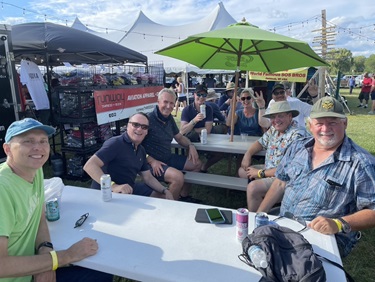
So far, each fly-in has attracted an average of seven or eight aircraft, which Scott expects to increase as the word gets out about the DPA. At Oshkosh, the club didn’t have time to get a booth, so they decided to meet informally. Each night a group of up to 20 Diamond pilots met for happy hour at the SOS tent.
Scott’s goal is to build DPA events into something like you see with the other type clubs—including a big annual meeting, training, and trips. He hopes one day there will be an organized mass arrival of Diamonds at Oshkosh, like the Bonanzas, Cessnas, Cherokees, and others.
Sharing the Knowledge
Another major focus of the type club will be knowledge sharing, Ed said. “We want to work with the Diamond factory to develop standardized training of Diamond pilots.” The DPA also wants to be a resource for teaching basic maintenance that owners and pilots are allowed to do, such as how to change a tire or do an oil change on the Austro engine. “I think the biggest thing is we’re just trying to improve the Diamond ownership experience.”
Ed is passionate about improving GA pilot safety through better aeronautical decision making and the use of automation. He’s particularly impressed with the Garmin 1000, which has been standard equipment in Diamond aircraft since the MFD was introduced in 2004.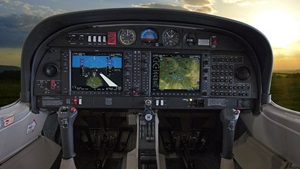
“I retired as an airline pilot on the 787. The Garmin 1000 package is as good or better than anything I saw on the 787. It’s got amazing capabilities,” Ed said. “But the capabilities are only as good as your understanding of the equipment, and there is a huge knowledge gap for the appropriate use of automation.”
Ed points to the Cirrus training program, which he called “absolutely top drawer,” as something for the DPA to aspire to. “We’re in the infant stages of this organization, but our hope is to be like a Cirrus-type organization over time,” he said, noting that Cirrus has done a good job trying to close the knowledge gap for its pilots. However, a huge gap still exists between professional aviators and their safety record, and the safety record in the GA world. “It’s not just as a Diamond Pilots Association endeavor,” he said. “I think GA in general has a lot to do to copy or emulate what the professional airline pilot or the professional corporate pilot does in terms of proper aeronautical decision making.”
Ed believes if training can be standardized and the aeronautical decision-making aspect is addressed as well, GA safety will improve. He would like to see the DPA develop training on the use of modern avionics and the many functionalities to help pilots improve their knowledge and safe operation of their aircraft. “Diamond aircraft are very safe and docile if you fly them properly,” he said.
The DPA also is working with Diamond Aircraft to develop an upgrade program for some of the older DA40s and DA42s. “We’ve had good cooperation from Diamond Aircraft, both the Canadian subsidiary and the headquarters in Austria,” Ed said. “So far we’ve developed a really good relationship with them, and I think that will be key to our success.”
Membership costs $50 a year and so far more than 100 Diamond owners and pilots have joined the Diamond Pilots Association in just a few months. As the organization grows, it is likely to become a valuable resource that will